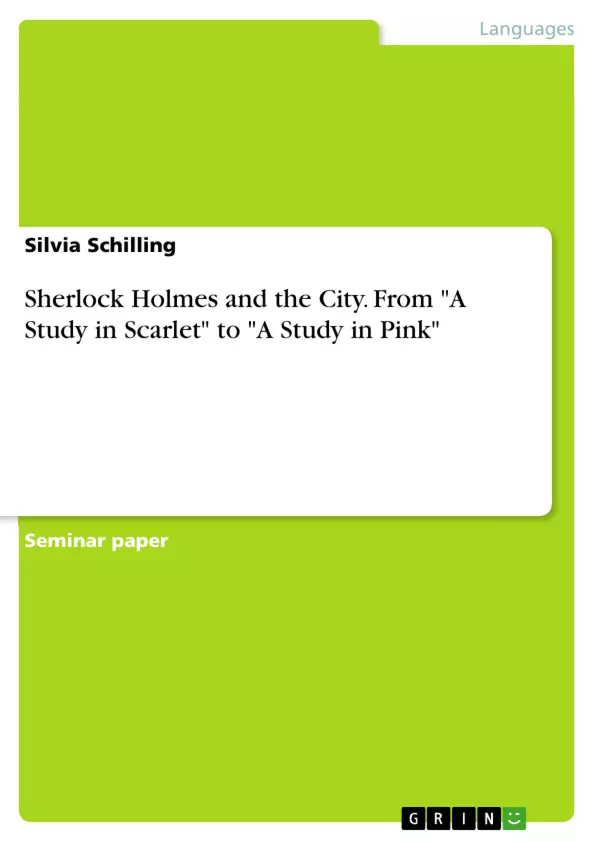This term paper compares Arthur Conan Doyle´s first Sherlock Holmes book "A Study in Scarlet" with the first episode of BBC´s TV series Sherlock, which is called "A Study in Pink". The comparison focuses especially on the representation of London as well as on the relationship between the detective and the city. Among other things, it analyses the methods through which Sherlock Holmes expands his knowledge of London. The paper uses Jurij Lotman´s well-known theory of boundary crossing for part of the analysis.
Table of Contents
- Introduction
- London in A Study in Scarlet vs. London in "A Study in Pink"
- The Introduction of London
- London as a City of Crime and Justice
- Mastering the City
- The Theory of Boundary Crossing
- Mastering the City on the Geographical Level
- The Closed Space vs. The Open Space
- "It is a hobby of mine to have an exact knowledge of London"
- Boundary Crossing in Reverse
- Mastering the City on the Social Level
- Mastering the City on the Mental Level
- Limitations
- Holmes' Relationship to the City
- Conclusion
Objectives and Key Themes
This paper aims to explore the significance of London in the Sherlock Holmes stories by Sir Arthur Conan Doyle, examining the similarities and differences between Doyle's depiction of London and its portrayal in the BBC series Sherlock. It will focus on the introduction of London in both works, as well as its characterization as a city of crime and justice.
- The introduction of London in both the original stories and the modern adaptation.
- The portrayal of London as a city of crime and justice.
- Sherlock Holmes' mastery of the city on various levels (geographical, social, and mental).
- The unique relationship between Sherlock Holmes and the city of London.
- The enduring relevance of Sherlock Holmes and his city to a contemporary audience.
Chapter Summaries
The first chapter introduces the reader to the concept of London's importance in both the original Sherlock Holmes stories and the BBC adaptation, "Sherlock." It sets the stage for the comparison of the two works, focusing on the initial portrayal of London in both "A Study in Scarlet" and "A Study in Pink." The chapter also delves into the different ways in which London is characterized as a city of crime and justice, providing insights into the setting's impact on the stories.
The second chapter delves deeper into how Sherlock Holmes masters the city of London. It explores the concept of "boundary crossing" as a theory to understand Holmes' mastery of the city on multiple levels. The chapter examines the geographical, social, and mental aspects of Holmes' domination of London, highlighting his keen understanding of its various facets.
Keywords
This paper focuses on the city of London, its portrayal in the Sherlock Holmes stories by Sir Arthur Conan Doyle, and the BBC series "Sherlock." Key themes explored include the introduction of London as a setting, London's characterization as a city of crime and justice, Sherlock Holmes' mastery of the city, and the complex relationship between the detective and his city.
- Quote paper
- Silvia Schilling (Author), 2015, Sherlock Holmes and the City. From "A Study in Scarlet" to "A Study in Pink", Munich, GRIN Verlag, https://www.grin.com/document/450246



